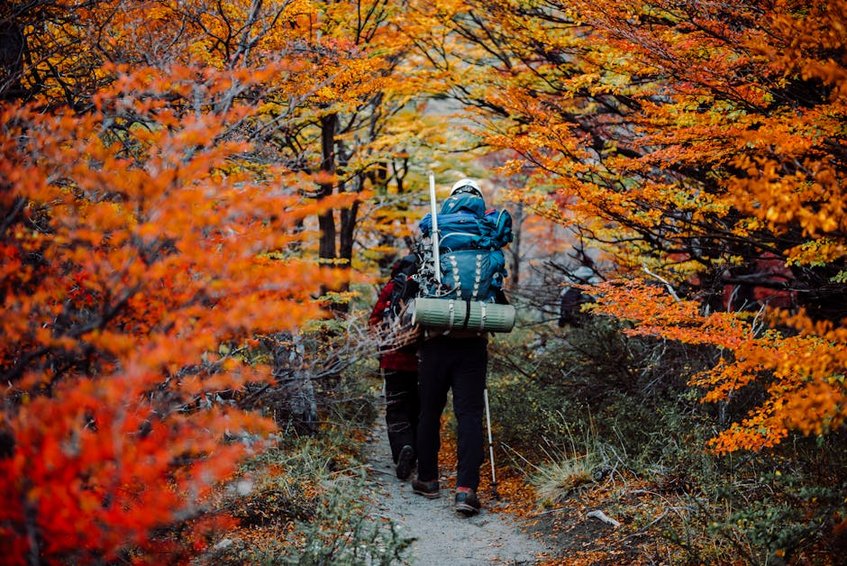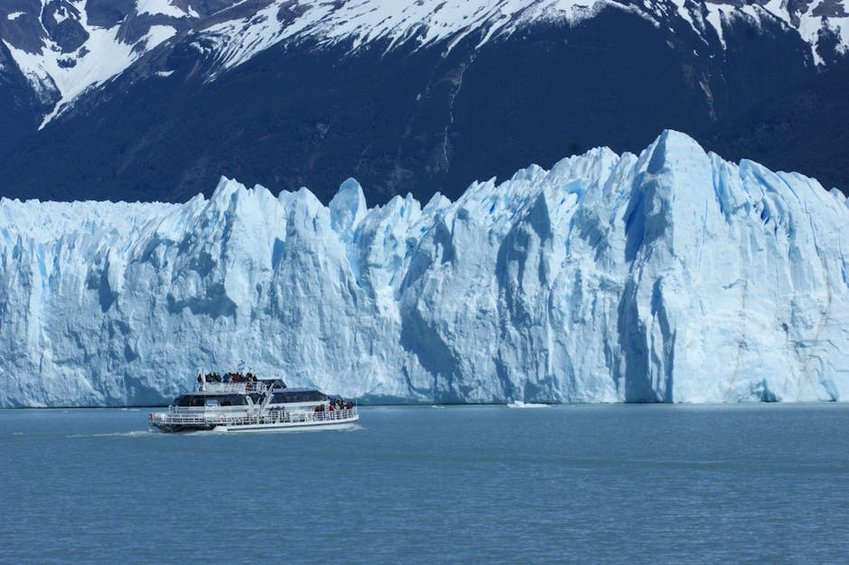Patagonia Glaciers: Your Ultimate Guide to an Icy Adventure
Standing before the immense, shimmering blue walls of Patagonia’s glaciers is a moment that redefines your understanding of nature’s power and beauty. This vast, remote region shared by Argentina and Chile contains some of the most spectacular and accessible glacial fields on Earth, offering adventures that range from serene lake viewings to heart-pounding ice trekking expeditions. The Patagonia glaciers represent one of the last true wilderness experiences available to modern travelers, where you can witness ancient ice calving into milky turquoise waters with thunderous cracks that echo through pristine valleys. Whether you’re an avid hiker, a photography enthusiast, or simply someone seeking awe-inspiring landscapes, exploring these frozen rivers provides an unforgettable connection to our planet’s dramatic natural history. From the famous Perito Moreno to the remote Southern Patagonian Ice Field, each glacier tells a unique story of geological time and climate change, making your visit both a personal adventure and a lesson in earth science.
Patagonia Glaciers Essential Information – What Every Traveler Should Know
Before embarking on your journey to witness these magnificent ice formations, understanding the basic geography and significance of Patagonia’s glaciers will dramatically enhance your experience. The region contains the largest ice fields outside the polar regions, with the Southern Patagonian Ice Field alone spanning approximately 13,000 square kilometers across Argentina and Chile. These glaciers are not static monuments but living, moving rivers of ice that constantly reshape the landscape through processes of accumulation and ablation. The distinctive blue color that mesmerizes visitors results from dense ice absorbing all colors of the spectrum except blue, which it reflects. Due to their sensitivity to climate change, many Patagonia glaciers are retreating at alarming rates, making your visit an opportunity to witness landscapes that may not exist in the same form for future generations.
Major Glacier Classifications – Understanding What You’re Seeing
- Valley Glaciers: These flow downhill between mountains, like the famous Perito Moreno, often terminating in lakes where calving occurs
- Tidewater Glaciers: Glaciers that reach the sea, such as those in Chile’s Laguna San Rafael, where icebergs break off into ocean waters
- Hanging Glaciers: Smaller glaciers perched on mountainsides, often seen throughout the Fitz Roy massif and Torres del Paine
- Budget Traveler: $70-100/day – Camping, self-catering, public transportation, and free viewpoints
- Mid-Range Traveler: $150-250/day – Comfortable hotels, guided day tours, restaurant meals, and rental car
- Luxury Experience: $400-600+/day – All-inclusive lodges, private guides, multi-day glacier treks, and premium experiences
- Argentina Official Tourism Website
- Chile Official Tourism Website
- National Geographic Patagonia Glaciers Coverage
Geological History and Formation – Ice That Tells a Story
The glaciers you’ll witness in Patagonia began forming during the last ice age approximately 18,000 years ago, though some ice fields have existed for millions of years. These massive ice formations develop through the accumulation and compaction of snow over centuries, gradually transforming into dense glacial ice that flows under its own weight. The distinctive striations and moraines you’ll observe along glacier valleys provide visible records of historical advance and retreat patterns. Interestingly, while many glaciers worldwide are retreating due to climate change, some Patagonia glaciers like Perito Moreno have remained relatively stable due to unique local weather patterns and topography that maintain their mass balance.

Patagonia Glaciers Planning Your Trip – When to Go and What to Budget
Planning your Patagonia glaciers adventure requires careful consideration of seasons, logistics, and budget, as this remote region presents unique challenges for travelers. The best approach involves deciding whether you’ll focus on the Argentine side (Los Glaciares National Park) or Chilean side (Torres del Paine and surrounding areas), or ideally, combine both if time permits. You’ll need to account for significant travel times between destinations, as roads are limited and distances are substantial in this sparsely populated region. Weather in Patagonia is notoriously unpredictable regardless of season, with conditions capable of changing from brilliant sunshine to howling winds and precipitation within hours. This demands a flexible itinerary and proper gear for all conditions, even during the summer months when most visitors arrive.
Best Time to Visit Patagonia Glaciers
The optimal time for visiting Patagonia glaciers depends on your priorities and tolerance for weather extremes. Summer months (December to February) offer the most stable weather with longer daylight hours (up to 17 hours of light), warmer temperatures averaging 50-60°F (10-15°C), and all facilities and tours operating at full capacity. However, this is also peak season with higher prices and more visitors. Shoulder seasons (October-November and March-April) provide fewer crowds, lower prices, and stunning autumn colors in March-April, though weather becomes more unpredictable with colder temperatures. Winter (May-September) offers dramatic snowy landscapes and solitude but limited access to some areas and shorter daylight hours, with many services reduced or closed.
Budget Planning and Costs for Your Glacier Adventure
Essential Preparation Checklist Before You Go
Proper preparation significantly enhances your Patagonia glaciers experience and ensures your safety in this remote region. Begin by checking passport and visa requirements for Argentina and Chile, as many itineraries cross between both countries. Book accommodations and key tours well in advance, especially for December-February visits, as quality options fill months ahead. Physically prepare with cardiovascular and leg strength training if planning serious hiking, as trails can be challenging with significant elevation changes. Your packing list must include layered clothing for all conditions, waterproof outer layers, sturdy broken-in hiking boots, sunglasses with UV protection (glare from ice is intense), and high-quality camera equipment to capture the stunning landscapes you’ll encounter.
Patagonia Glaciers Top Attractions and Activities – Must-See Frozen Wonders
Patagonia’s glacier country offers an incredible diversity of experiences, from easily accessible viewpoints requiring minimal effort to multi-day expeditions that test your endurance and reward with unparalleled access to remote ice fields. The crown jewel for most visitors is Argentina’s Perito Moreno Glacier in Los Glaciares National Park, where you can witness massive ice calving events from viewing platforms just meters from the action. Across the border in Chile, Grey Glacier in Torres del Paine National Park presents a spectacular sight with icebergs floating in the lake before the massive ice wall. For those seeking more adventurous experiences, ice trekking on various glaciers with crampons provides an intimate connection with the ice, while boat tours offer unique perspectives from the water that highlight the scale of these frozen rivers.
Must-See Glacier Highlights – The Essential Experiences
No visit to Patagonia’s glacier region is complete without experiencing Perito Moreno, arguably the world’s most spectacular accessible glacier. What makes this glacier exceptional is its rare stability while most glaciers retreat, its dramatic calving displays, and the incredible access via walkways that place you directly opposite the 240-foot (70-meter) high ice face. Equally impressive is Chile’s Grey Glacier, part of the Southern Patagonian Ice Field, which can be approached by boat through a field of icebergs or viewed from hiking trails in Torres del Paine. For a less crowded but equally stunning experience, consider visiting Upsala Glacier, though boat tours are required as it terminates in Lake Argentino. The lesser-known but equally impressive Viedma Glacier offers fantastic ice trekking opportunities with fewer visitors than its famous counterparts.
Hidden Gems and Local Favorites – Beyond the Famous Glaciers
While the famous glaciers deserve their reputation, seeking out lesser-known ice formations can provide more intimate experiences away from crowds. On the Argentine side, consider visiting Spegazzini Glacier, which has the highest front wall in the region at approximately 440 feet (135 meters) and is accessible via boat tours from El Calafate. In Chilean Patagonia, Balmaceda and Serrano Glaciers near Puerto Natales offer beautiful boat journeys through fjords with opportunities to hike to viewpoints. For truly adventurous souls, the remote Northern Patagonian Ice Field requires multi-day expeditions but rewards with pristine glacial landscapes untouched by mass tourism. Local guides often know secret viewpoints and seasonal changes that can provide unique perspectives even on popular glaciers, so consider hiring knowledgeable guides for half-day excursions.
Patagonia Glaciers Practical Travel Information – Getting There and Staying Safe
Navigating Patagonia’s vast distances requires strategic planning, as glacier viewing areas are remote and connections between them can be time-consuming. Most visitors arrive via major airports in El Calafate (Argentina) for glaciers on that side or Punta Arenas (Chile) for Chilean glaciers, with connecting flights from Buenos Aires or Santiago. Renting a vehicle provides maximum flexibility but requires understanding border crossing procedures if visiting both countries. Alternatively, buses connect major destinations but operate on limited schedules. Accommodation ranges from basic campgrounds to luxury lodges, with the best options often booking months in advance during peak season. Weather dictates all activities in this region, so building flexibility into your itinerary is essential, as glacier tours may be canceled due to high winds or poor visibility.
| Transportation Method | Key Features | Approximate Cost (USD) |
|---|---|---|
| Rental Car | Maximum flexibility, ability to visit remote viewpoints, border crossing possible with documentation | $70-120/day |
| Public Buses | Economical, reliable between major destinations, limited schedules | $20-50 per segment |
| Organized Tours | Guided experiences, includes transportation, limited flexibility | $100-300 per day tour |
| Domestic Flights | Time-saving for long distances, weather-dependent, baggage limitations | $150-300 per segment |


